25 Most Influential Biology Books 2010–2020
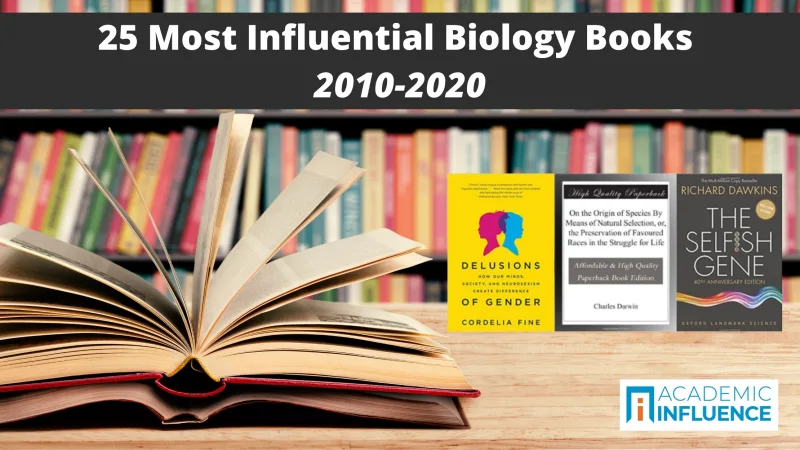
Biology is the academic study of living beings. It encompasses many subdisciplines, including everything from taxonomy (the relationships among similar groups of organisms) and evolutionary biology (the study of the history of life on earth and the principles underlying changes in biological forms over time), to molecular biology, including genetics (the way life works at the level of macromolecules and organelles), microbiology (single-celled organisms), botany (plants), mycology (fungi), and zoology (animals). Zoology, in turn, contains its own subfields, including anatomy and physiology (the structure and operation of animals at the level of organ systems) and animal psychology (animal behavior), among others.
Key Takeaways
- Our list of the most influential books does not include textbooks, reference texts, and the sorts. Instead, the list only contains biology-related books that have had a mixed impact on academia and the general public over the past ten years.
- There are many books on biology available. Some are more appropriate for standard coursework, while others are better suited for independent study. Biology can be better understood if you have a helpful book companion because it’s such a complex subject for many individuals.
- Biology is a branch of science that aids in understanding the functioning, evolution, and interactions of the living world’s numerous species, including humans. It improved living standards in agriculture, medicine, biotechnology, and many other fields.
This is a list of the most influential books in biology of the past decade (2010–2020), where we have assigned an objective measure of “influence” to each book on the basis of the number of references it has received in both the academic literature and the popular media.
Note that our list does not necessarily represent the most popular books overall published during the past ten years, nor is it a list of biology bestsellers during that time frame—for several reasons.
For one thing, we have excluded general biology textbooks and reference works, as well as sacred texts and all but the very most influential of fictional works, which may contain biology-related material.
For another thing, our list includes several perennial classics that remain influential today—one of them published over 200 years ago! Not only do several such works retain great contemporary influence, in some cases they have even enjoyed a resurgence in popularity in recent years.
Nevertheless, ours is not a list of the most influential biology books of all time. That list would have a very different look and feel to it. Rather, our list provides you with the 25 books on biology that have had the greatest combined academic and popular impact over the past decade.
If you’re interested in dedicating your college education to these and other essential biology texts, check out The Best Colleges & Universities for a Bachelor’s in Biology.
Biology Books Students Can’t Be Without
It’s human nature to take an interest in our natural world. However, it can be pretty difficult to be proficient in biology, given the complexity of the topic and difficult terminology. It is advised to pick a biology book authored by an award winning science writer, with excellent writing that understandably presents a lot of information.
As a result, more and more people are turning to biology books that help them understand the field in an exciting and engaging way.
Why Biology is Important in Daily Life
Biology includes all aspects of life and living things. Since living things include people, biology is useful in describing the diverse phenomena outside and inside us. People need to know biology to know its importance to our daily lives.
Let’s investigate how some biological concepts relate to various facets of our daily lives.
Evolutionary Developmental Biology
Evolutionary developmental biology has a wide range of effects on how we live. The management of fertility and infertility is one of the most important topics about the human race and the species’ survival.
Our ability to manage conception and boost fertility is aided by understanding the estrous cycle, the development of sexual organs, the human genome, and the selfish gene.
Molecular Biology
One of the most underappreciated and significant achievements of the scientific method in human history is the fact that molecular biology, through gene sequencing, has confirmed natural selection, gene flow, genetic drift, and the bottleneck effect. Because of the research in this branch of biology, we now have better scientific knowledge of a wide range of topics, including virology, microbiology, human health.
Evolutionary Biology
We see evolution in our daily lives, such as when we catch or fight the flu virus. Some of our most pressing global health issues are also influenced by evolution. HIV, for example, evolves faster than the immune system can keep up.
Synthetic Biology
As a new scientific and engineering discipline, synthetic biology has recently captured the world’s attention. It enables medical researchers to create new enzymes, pathways, and even whole cells and design and build finely controllable metabolic and regulatory pathways, circuits, and networks.
Tips For Reading The Most Influential Biology Books
The most influential biology books are instructional and informational in nature rather than completely narrative works.
As a result, these books shouldn’t be read like conventional novels from cover to cover. The ideal approach is to read each chapter in the order of preview, read, and review. Don’t worry about giving away the finale; award-winning science writers don’t build to a big reveal.
If there is a summary for a books, it is suggested that you begin reading there. You will get a background on the key concepts addressed by this.
You can now proceed to read the chapter. This should be active reading, unlike reading a storybook, which is passive reading.
The most influential books are not like novels, where you can read easily, smoothly, and quickly. Even if you’re distracted while reading a novel, you can still understand what it’s about. When you are not paying attention to biology books, you will get very little out of them, and they will appear more complicated than they are.
You might encounter unfamiliar biology terms. It’s important to search for that term’s meaning to understand what you’re reading. These books are not repetitive; thus, paying attention to every word and picture is essential.
And now, read on for a look at the 25 Most Influential Books in Biology.
25 Most Influential Books in Biology
1.Delusions of Gender: How Our Minds, Society, and Neurosexism Create Difference
By: Cordelia Fine, 2010
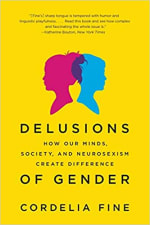

The author investigates the scientific evidence commonly put forward to support the idea that male and female behavioral differences are biologically determined (i.e., “hardwired”), at least in part. She concludes that the evidence is insufficient to justify the sweeping claims about innate sex and gender roles that are often made. However, she does not pretend to have settled these complicated questions once and for all, but rather cautiously endorses more and better research.
2.On the Origin of Species by Means of Natural Selection, or The Preservation of Favoured Races in the Struggle for Life
By: Charles Darwin, 1859
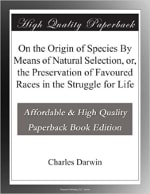

Darwin’s Origin of Species is often considered one of the two or three most influential scientific treatises of all time. It is a fascinating accumulation of dense biological detail, all in support of the author’s thesis that random variation and selective retention (natural selection) is the mechanism that generates change in biological forms over time (evolution). The book went through six editions during the author’s lifetime; today, it is available in innumerable editions.
3.The Selfish Gene
By: Richard Dawkins, 1976
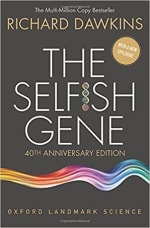

This book advances an innovative scientific thesis, while at the same time providing an elegantly written exposition of modern evolutionary theory for the general public. The author’s basic argument is that according to the modern genetic theory of natural selection (the “Modern Synthesis”) evolution is best understood as resulting from a competition, not between individual organisms, but rather between their germlines. It was Dawkins who introduced the idea that animal bodies are just “vehicles” for their genes. The astonishing success of this book resulted in numerous editions over the years, including a fortieth-anniversary edition released in 2016.
4.The Double Helix: A Personal Account of the Discovery of the Structure of DNA
By: James D. Watson, 1968
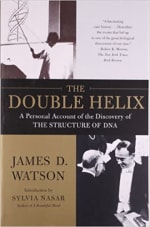

This is a personal memoir of the events leading up to the epoch-making discovery of the three-dimensional structure of the DNA molecule by the author and Francis Crick in 1953. It provides a breezy, opinionated, “warts-and-all” account of the personalities involved in one of the most important scientific breakthroughs of the twentieth century. The book has been reprinted several times in various editions.
5.Sex at Dawn: The Prehistoric Origins of Modern Sexuality
By: Christopher Ryan and Cacilda Jethá, 2010


This book is an exercise in popular evolutionary psychology. It pushes the message that despite the prevalence of polygyny and monogamy around the world throughout recorded history, the biological basis of the human psyche remains that of our “environment of evolutionary adaptedness.” With respect to sex, the authors claim that as recently as 10,000 years ago modern humans of both sexes still practiced the “polyamory” of our bonobo-like ancestors. The book was reprinted in 2011 with a different subtitle, “How We Mate, Why We Stray, and What It Means for Modern Relationships.”
6.The Forest Unseen: A Year’s Watch in Nature
By: David George Haskell, 2012
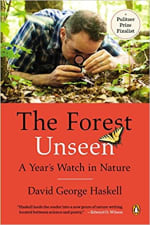

This engaging book reports the author’s observations of a single patch of old-growth forest in Tennessee over the course of a year. With the reader looking over his shoulder, the author observes the myriad changes in the forest’s flora and fauna as the seasons revolve. Combining theoretical astuteness with emotional sympathy and literary flair, this study provides a unique entrée into the science of ecology.
7.The Emperor of All Maladies: A Biography of Cancer
By: Siddhartha Mukherjee, 2010
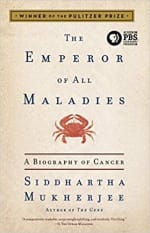

The author is both a cancer researcher and an oncologist (a physician specializing in cancer). This gracefully written book informs the reader about the genetic and physiological bases of cancer, as well as the experience of undergoing treatment for cancer. The book looks both backwards at how we got to where we are today, and forwards to what we can expect in the near-term future.
8.The Gene: An Intimate History
By: Siddhartha Mukherjee, 2016
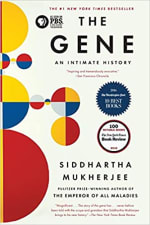

Mukherjee, a physician and best-selling author, here provides a history of our understanding of genetics and of the development of genetic engineering technology, married to a memoir focused on the tragic, cross-generation recurrence of mental illness in his own family. As in his previous book on the history of cancer research (see #7 above), here the author provides another example of his trademark combination of scientific expertise and literary style. In 2020, Ken Burns created a two-hour television series based on the book.
9.On Human Nature
By: Edward O. Wilson, 1978
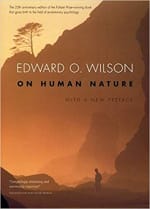

In 1975, E.O. Wilson published his ground-breaking and controversial work, Sociobiology (#16 below). Three years later, he published this book to show how the sociobiological approach—which explains animal cooperative behavior reductively in terms of neo-Darwinian, genetic analysis—may be applied to human beings. The author maintains that the sociobiological approach to human behavior is destined to replace the current social sciences and even the humanities. The book was republished in a Twenty-Fifth Anniversary Edition in 2004.
10.The Population Bomb
By: Paul R. Ehrlich, 1968
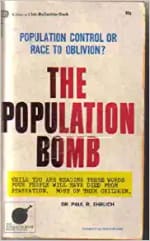

This book predicted that unchecked human population growth would lead to worldwide famine and ecological and social collapse during the 1970s and 1980s. A follow-up entitled The Popular Explosion appeared in 1990, claiming the earlier book’s predictions had been borne out and predicting even worse disasters in the near future. The author’s wife, Anne H. Ehrlich, acted as a co-author to the original book, but was not credited at the time. Her name was added to the title page of the 1990 edition.
11.The Social Conquest of Earth
By: Edward O. Wilson, 2012
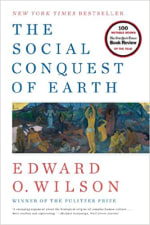

This book provides a history of the evolution of animal sociality, interpreted through the lens of Wilson’s famous theory of “sociobiology” (see #16 below). Beginning with the earliest forms of life, the author delineates the evolutionary stages leading to the two pinnacles of sociality (known as “eusociality”): the social insects and human beings. Later chapters focus on the human form of eusociality based on symbol use, language, cumulative cultural tradition, and the construction of social conventions, practices, and institutions.
12.The Mathematics of Life
By: Ian Stewart, 2012
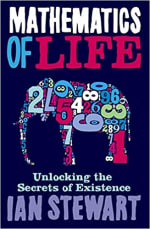

Stewart, a highly prolific and best-selling popular mathematics author, here describes the many ways in which mathematics is taking on increasing importance in biology today. Historically, the life sciences have been slow to embrace formal methods into their experimental and theoretical procedures, but that is now beginning to change. In a smoothly written and non-threatening style of presentation, Stewart shows the reader precisely how this is so. If you have ever wondered what the biological significance of Fibonacci numbers, fractal geometry, or the Game of Life might be, this is the book for you.
13.The Singularity is Near: When Humans Transcend Biology
By: Ray Kurzweil, 2005
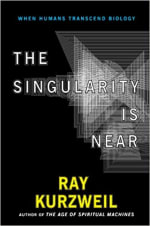

The author is a major player in the artificial intelligence (AI) world. Among many other projects, he has been involved in the development of state-of-the-art optical character recognition (OCR), text-to-speech, and speech recognition software. In addition, through his several popular books (see #18 below) he has become something of a guru in the “transhumanist” movement, which looks to transcend human nature through advanced technology. In this book, Kurzweil argues that the moment when human beings will wed their minds to machinery, shedding their perishable, carbon-based bodies—an event he identifies as “the singularity”—lies in our not-too-distant future.
14.Endless Forms Most Beautiful: The New Science of Evo Devo
By: Sean B. Carroll, 2005
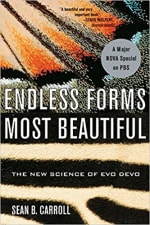

This is a user-friendly account of the evolution of life on earth, told through the lens of the new science of “evolutionary developmental biology” (“evo devo,” for short). Evo devo is important because it explains how random variation at the level of genotype gets translated into fitness at the level of the phenotype. On this view, the key to a proper understanding of evolution is the fact that originally random genetic variations are adaptively entrained into the preexisting, goal-directed process of embryonic development.
15.The Ants
By: Bert Hölldobler and Edward O. Wilson, 1990
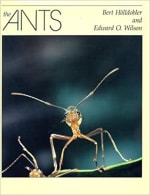

This volume is the ultimate resource on ants, covering all aspects of their classification, evolutionary history, anatomy, physiology, and highly cooperative social behavior. It provides exquisite detail about a myriad of topics, from the colony’s life cycle, chemical communication, and caste system, to the wide variety of foraging strategies these fascinating insects employ, including Army ants and ant “gardeners.” The book is gracefully written and illustrated with abundant photographs and elegant line drawings.
16.Sociobiology: The New Synthesis
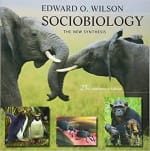

The author is a world-famous myrmecologist (an ant specialist—see # 15 above) and evolutionary theorist, who is best known for the theory originally outlined in this book. His basic thesis is that neo-Darwinian evolutionary mechanisms such as kin selection and reciprocal altruism can account for even the high degree of cooperation exhibited by the social insects and by human beings. In 1975, the publication of this book provoked a storm of controversy—Wilson was physically assaulted during a speech before the American Association for the Advancement of Science (AAAS) by having a pitcher of ice water poured on his head! A Twenty-Fifth Anniversary Edition of the book was published in 2000.
17.A Troublesome Inheritance: Genes, Race and Human History
By: Nicholas Wade, 2014
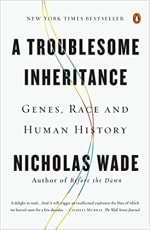

This book, by a widely published science journalist, steps into the intellectual, moral, and political minefield of genetics and race. The author outlines historical and current thinking by a range of scientists on the question of the genetic basis, if any, of group behavioral differences in humans, where the groups in question are defined on the basis of “race.” Many, it must be noted, consider race to be wholly a social construct. Though the discussion in this book is conducted with relative care and necessary nuance, the conclusions reached will be vigorously disputed by many biologists and social scientists, and indeed may be morally repugnant to some readers. Caveat lector!
18.The Age of Spiritual Machines: When Computers Exceed Human Intelligence
By: Ray Kurzweil, 1999
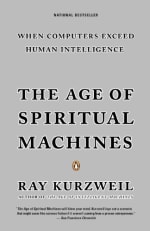

In this earlier run-up to the author’s 2005 best-seller (see #13 above), the author paints a vivid picture of a near-future in which computer-driven robots will advance to the level of—and then exceed—human intelligence. He argues that this will result in manmade machines that have all the hallmarks of the conscious human personality, including emotions. He envisions a world in which robots will be our teachers, our colleagues, our friends, and our lovers.
19.The Blind Watchmaker: Why the Evidence of Evolution Reveals a Universe without Design
By: Richard Dawkins, 1986
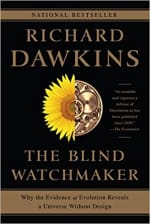

This is Dawkins’s follow-up to his breakthrough 1976 volume, The Selfish Gene (see #3 above). Aimed at a wide, popular audience and written with the author’s trademark panache, this book focuses on what is perhaps the most-serious philosophical objection to the Darwinian worldview—the apparent design of living systems. The book’s title alludes to an 1802 work entitled Natural Theology, in which the author, British clergyman William Paley (1743–1805), (1) compares the intricacies of an organism to those of a watch, (2) points out that from the latter one automatically infers the existence of a watchmaker, and (3) argues that by parity of reasoning we ought to infer that God created living things. Dawkins applies the neo-Darwinian theory of natural selection to show why he believes Paley’s famous analogy fails: evolution itself is a kind of watchmaker—but a blind one. An illustrated edition of this book was released in 2015.
20.Finding Darwin’s God: A Scientist’s Search for Common Ground Between God and Evolution
By: Kenneth R. Miller, 1999
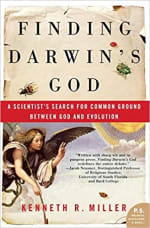

The author is both a cell biologist and a believing Catholic. He wrote this book in order to explain why he rejects the idea that his scientific knowledge conflicts with his Christian faith. In the course of the book, Miller provides an outline of the histories of both biological and Christian thought. His basic conclusion is that our modern understanding of the evolutionary process according to Darwin’s great theory of natural selection provides us with the truth about “the book of God’s work,” just as religious thought provides us with the truth about “the book of God’s word”—in the words of the philosopher and oracle of modern science, Francis Bacon (1561–1626).
21.The Intelligence of Dogs: Canine Consciousness and Capabilities
By: Stanley Coren, 1994
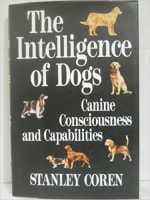

In this book, the author—who is a professional psychologist—provides us with a readable history of scientific thinking about animal consciousness, with an emphasis on dogs, together with a detailed examination of current views on the subject. In addition, this volume serves as a guidebook to help dog owners better understand their pets and thus interact with them more positively and effectively. A new edition was published in 2006 with the subtitle, “A Guide to the Thoughts, Emotions, and Inner Lives of Our Canine Companions.”
22.The History of Animals: A Philosophy
By: Oxana Timofeeva, 2018
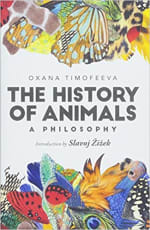

Oxana Viktorovna Timofeeva is a Russian philosopher who works at the Russian Academy of Sciences’ Institute of Philosophy. She wrote her PhD thesis, “Eroticism in [the] Philosophy of George Bataille,” in 2006. This book was originally published in the Netherlands in 2012 as History of Animals: An Issue on Negativity, Immanence and Freedom. Its main thesis is that the entire Western philosophical tradition, which posits a fundamental metaphysical distinction between human nature and the natures of other animals, needs to be deconstructed, so we can fully embrace our animality.
23.Frankenstein; or, The Modern Prometheus
By: Mary Shelley, 1818
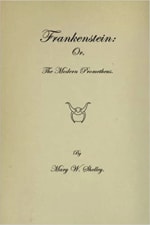

On a rainy afternoon in Geneva in 1816, a group of English expat friends—Mary Wollstonecraft Shelley; her husband, the poet Percy Bysshe Shelley; the poet Lord Byron; and the physician John Polidori—hit on a way to pass the time. They would have a friendly ghost-story writing contest! That afternoon, Mary Shelley came up with the basic idea for Frankenstein: a provincial doctor brings a dead body back to life by means of the newly discovered phenomenon of electricity, then thought to be the mysterious life force. She went on to write up her idea in the form of a novel, which was published two years later. This most-famous of all Gothic horror romances has been reprinted countless times and transmuted into many other media, including, notably, the elegant 1931 film version of the same name by the English director James Whale, and the achingly elegiac 1973 film, El Espíritu de la Colmena [“The Spirit of the Beehive”], by the Spanish director Victor Erice, in which the monster from Whale’s film, played by the great Boris Karloff, haunts a young child’s imagination. A book that has passed into a universal mythic archetype, Frankenstein is available in numerous recent editions.
24.The Bell Curve: Intelligence and Class Structure in American Life
By: Richard J. Herrnstein and Charles Murray, 1994
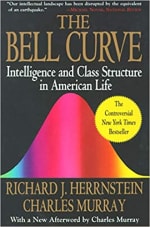

This highly controversial book, written by a psychologist and a political scientist, was roundly condemned on its publication and continues to elicit impassioned attacks on its methodology and, especially, its conclusions. In a nutshell, the authors argue (1) that IQ is a good predictor of life-success as measured by job stability, income level, family stability, and other similar factors, (2) that IQ is at least partly genetically based, and (3) that, therefore, consistent differences in life success between racial groups are partly due to genetically based differences in IQ. They then conclude that group differences in life-success are in some degree immune to amelioration by social programs.
25.Not in Our Genes: Biology, Ideology, and Human Nature
By: Richard C. Lewontin, Steven Rose, and Leon J. Kamin, 1984
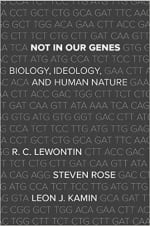

This book is the cooperative effort of a distinguished population geneticist (Lewontin), a neurobiologist (Rose), and a psychologist (Kamin). They make two main claims: (1) neo-Darwinism as advanced by Richard Dawkins, E.O. Wilson, and others—to the effect that all animal and even human behavior is ultimately controlled by our genes (“biological determinism”)—is false; and (2) biological determinism is associated with conservative politics. The authors then go on to advocate for socialism. A second edition was released in 2017.
Now that you know what books to check out, consider a deep dive with a look at the best colleges & universities for a bachelor’s in biology.
Visit our Study Guide Headquarters for tips, tools, and much more.
See our Resources Guide for much more on studying, starting your job search, and more.